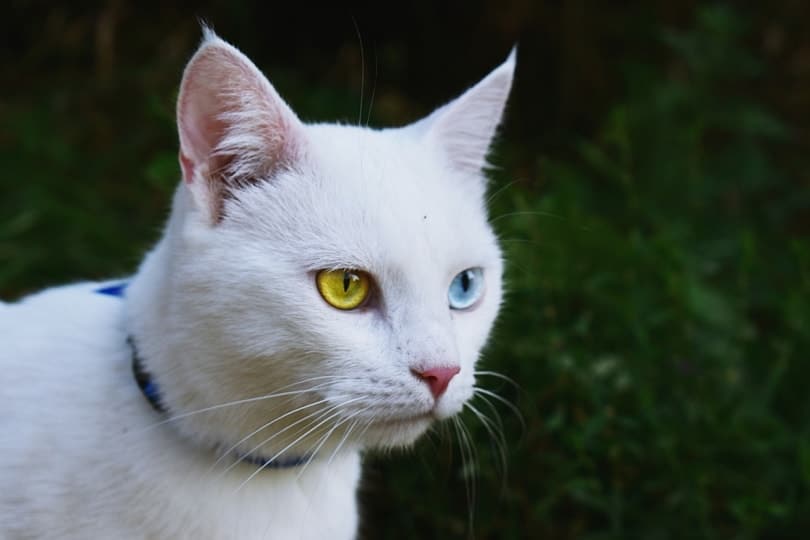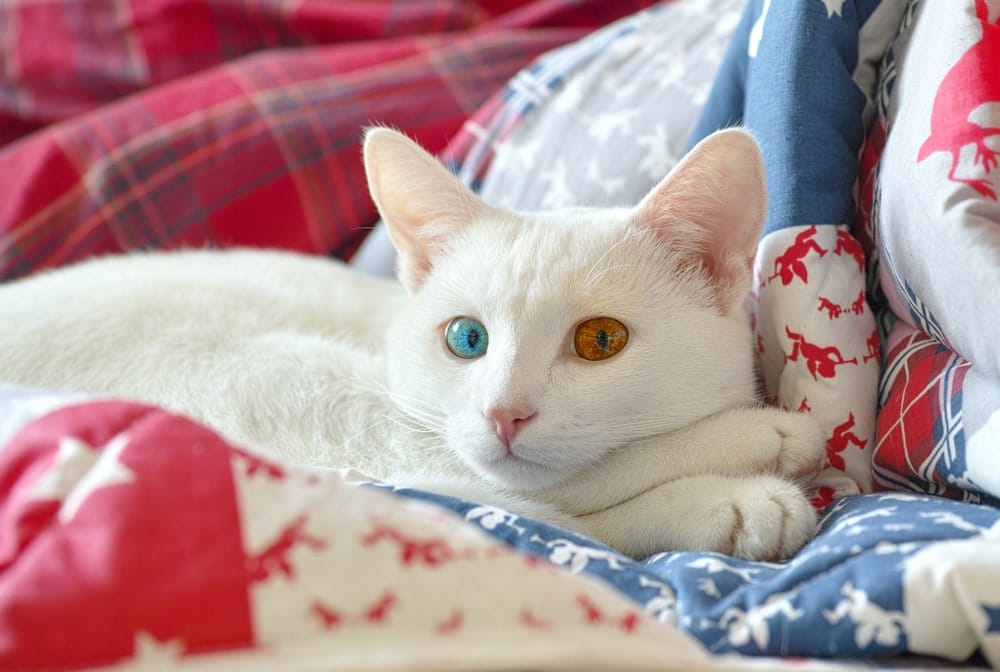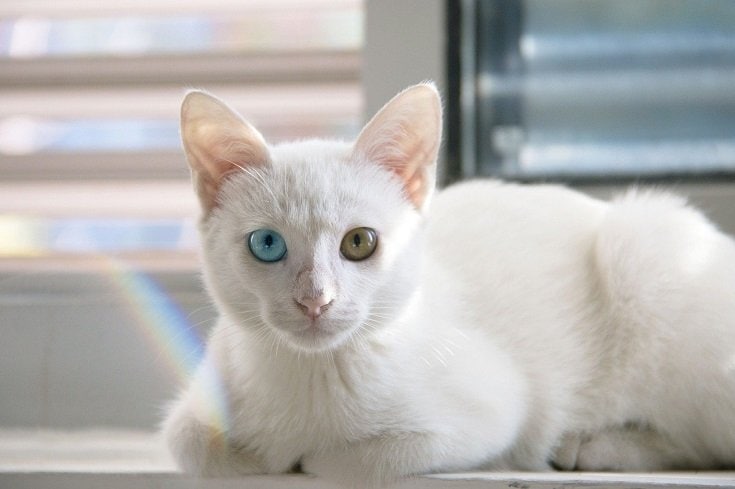All cats are special in their own way, but cats with two different colored eyes are extra special. The medical term for this is heterochromia, or an odd-eyed cat.
How rare is a cat with two different eye colors? While this condition isn’t common, it’s not as rare as you might expect. Read more about this unique characteristic below.

What Is Heterochromia?
Heterochromia is a condition that occurs in humans, cats, and other animals. Generally, this is when the eyes’ irises are two different colors, but there are a few distinct types:
- Complete heterochromia: One iris is a different color than the other
- Partial heterochromia: Part of one iris is a different color than the rest of it
- Central heterochromia: The inner ring of the iris is a different color than the outer portion
Heterochromia can be genetic or acquired through illness or injury.

What Causes Heterochromia in Cats?
All kittens are born with eyes that look blue because of a lack of pigment. The eye color develops over time as more melanin (pigment) is distributed. This typically happens in both eyes, but cats with heterochromia only have melanin in one eye, leaving the other blue.
While it’s not exactly clear why some cats develop heterochromia, there could be a genetic component. The gene that causes white fur could prevent melanin from reaching one eye during development.
Is Heterochromia Rare in Cats?
Heterochromia is surprisingly common in cats, but it’s more common in white cats. It’s rare for cats with dark or black coats to have heterochromia. This is because of the role melanin plays in the development of coat and eye colors.
What Is the Rarest Eye Color in Cats?
Complete heterochromia may not be that rare, but partial or central heterochromia is. This is sometimes called a dichromatic eye. Also seen in white cats, dichromatic eyes are when you see two colors in one iris. They can be blue, yellow, green, brown, or orange.
White Cats, Heterochromia, and Deafness
Heterochromia is most common in white cats. Cats with white coats and heterochromic eyes are likely to be deaf. This typically occurs in the ear on the same side as the blue eye.
Research indicates that only 17%–22% of white cats with non-blue eyes are born deaf, while 40% are deaf with one blue eye. Roughly 65 to 85% of all-white cats with two blue eyes are deaf.
Non-white cats with one blue eye aren’t more likely to be deaf.

Common Breeds With Heterochromia
Because heterochromia is more likely to occur with a white coat, breeds that commonly have white coats may feature odd-eyes.
Key Takeaways
Heterochromia in cats may seem like a rare trait, but it’s more common than it seems. Because it co-occurs in white coats and many cat breeds produce white coats, you’re likely to see heterochromia. Still, it does add some unique and distinctive beauty to your cat.
See also:
- Iris Melanosis in Cats: Vet Reviewed Signs, Causes & Treatment
- Do Siamese Cats All Have Blue Eyes? Genetics Explained
Featured Image Credit: vistawei, Pixabay











